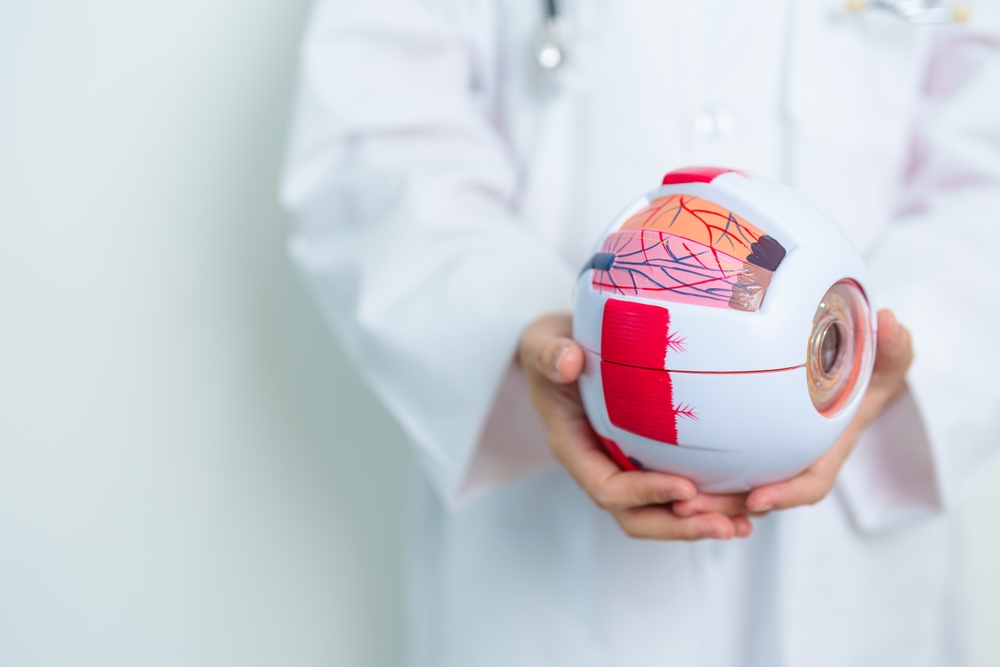NORTHERN NEVADA’S
LEADERS IN EYE HEALTH
Experts in state-of-the-art medical and surgical care for the eyes.
CONDITIONS TREATED
Diabetic Eye Exams in Reno, NV
What is Diabetic Retinopathy?
Diabetic retinopathy is the leading cause of blindness in adults. It occurs when diabetes damages blood vessels inside the eye. These weak vessels leak fluid into an area of the eye called the retina. New, distorted vessels may grow, then bleed. These vessels can damage areas of the retina, causing blurry, distorted vision.
What Causes Diabetic Retinopathy?
Diabetes is the cause of this eye disease. Over time, diabetes makes blood vessels weaken all over the body, including in the eyes. Poor blood sugar control can make retinopathy worse. So can smoking or poorly controlled high blood pressure. Pregnancy can also cause retinopathy to worsen.
What Are the Symptoms?
You can have diabetic retinopathy without knowing it. Usually, there is no pain and no outward sign. Over time, you may notice gradual blurring or some vision loss. Symptoms may come and go. Early treatment and good control of risk factors may help prevent vision loss or blindness.
What You Can Do
Have your eyes examined regularly by an eye specialist. Your healthcare provider will tell you when and how often you need these exams. You can also help control your diabetes through exercise, diet, and medicine, as instructed by your healthcare provider. These same steps may also help control diabetic retinopathy.

Evaluating Your Eyes with Diabetic Retinopathy
Diabetic retinopathy is a condition that occurs when diabetes damages blood vessels in the rear of the eye. It can lead to vision loss. To help catch it early, have a complete dilated eye exam at least once a year. Pregnant women should have this exam more often. During the exam, the eye doctor will review your medical history, examine your eyes, and check your vision.
Your Medical History
Your eye doctor may ask about the following:
- Your diabetes type, history, treatments (such as insulin), and how you monitor your blood sugar level
- Your eye doctor examines your eyes with a slit lamp.
- Your family’s health, including whether any relative has had diabetes or diabetic retinopathy
- Any diseases, surgeries, or other medical procedures you’ve had
- Any medications, herbs, or supplements you use, including those you buy over the counter
Your Eye Exam
Your eye doctor uses an eye chart and other tools to check your vision. Then he or she examines your eyes for signs of disease. You are given eyedrops to widen (dilate) your pupils. Then you may have one or more of the following tests:
- Tonometry to measure fluid pressure inside the eye.
- Slit lamp exam to allow the doctor to view the structures of your eye.
- Ultrasound to create an image of the eye using sound waves. Ultrasound may be used if blood is found in the clear gel that fills the eye (vitreous).
Fluorescein Angiography
This test may be done to check the health of the inside lining of the eye (retina). It also checks the tiny blood vessels (capillaries) that carry blood to the retina. During the test:
- Photographs are taken of the retina.
- A safe dye is then injected into the bloodstream through the arm or hand. The dye travels to the capillaries in the eye.
- More photographs are taken of the retina. The dye causes the capillaries to stand out on the photographs.
- You may feel brief nausea during the procedure. For a few hours after the test, your skin, eyes, and urine may appear yellow.
Treating Diabetic Retinopathy
Treatment may help slow the progress of diabetic retinopathy. Your treatment plan depends on your condition. It may include frequent exams to monitor your condition, laser treatment, and other procedures.
Monitoring Your Vision
At first, your doctor may simply want to monitor your vision. From time to time, you may also have an angiogram. This test uses a special dye to create detailed images of the retina. These images help your doctor decide whether special treatments are needed. Laser is one type of treatment that may help limit vision loss from diabetic retinopathy.
Types of Treatment
Special treatments can help stop bleeding, slow or stop new vessel growth, and preserve vision. The type of treatment you get depends on your condition.
- Laser treatment can help stop leaks and limit vessel growth.
- Surgery can remove the vitreous. This may help if the vitreous becomes filled with blood and obscures your vision.
- Cryotherapy shrinks blood vessels and repairs the retina.

Controling Your Risk Factors
You may have or be at risk of diabetic retinopathy. This condition occurs when diabetes damages blood vessels in the rear of the eye. You can help reduce your risk of vision loss from the condition by taking care of your health. This means managing your diabetes and other health problems that can make diabetic retinopathy worse.
Manage Your Diabetes
A diabetes educator can help you make an action plan to control your risk factors. The best way to protect your vision is to keep your blood sugar level in a healthy range. Check your blood sugar often. Follow your diabetes management plan. And work with your regular healthcare provider or endocrinologist (diabetes doctor) if you are having trouble keeping your blood sugar in a healthy range.
Control Your Risk Factors
Other factors that damage blood vessels can make diabetic retinopathy worse. These include:
- High blood pressure
- Smoking
- High cholesterol
- Work with your healthcare team to control these problems and help lower your risk. A diabetes educator can help you control blood pressure and high cholesterol. He or she can also recommend stop-smoking programs.






